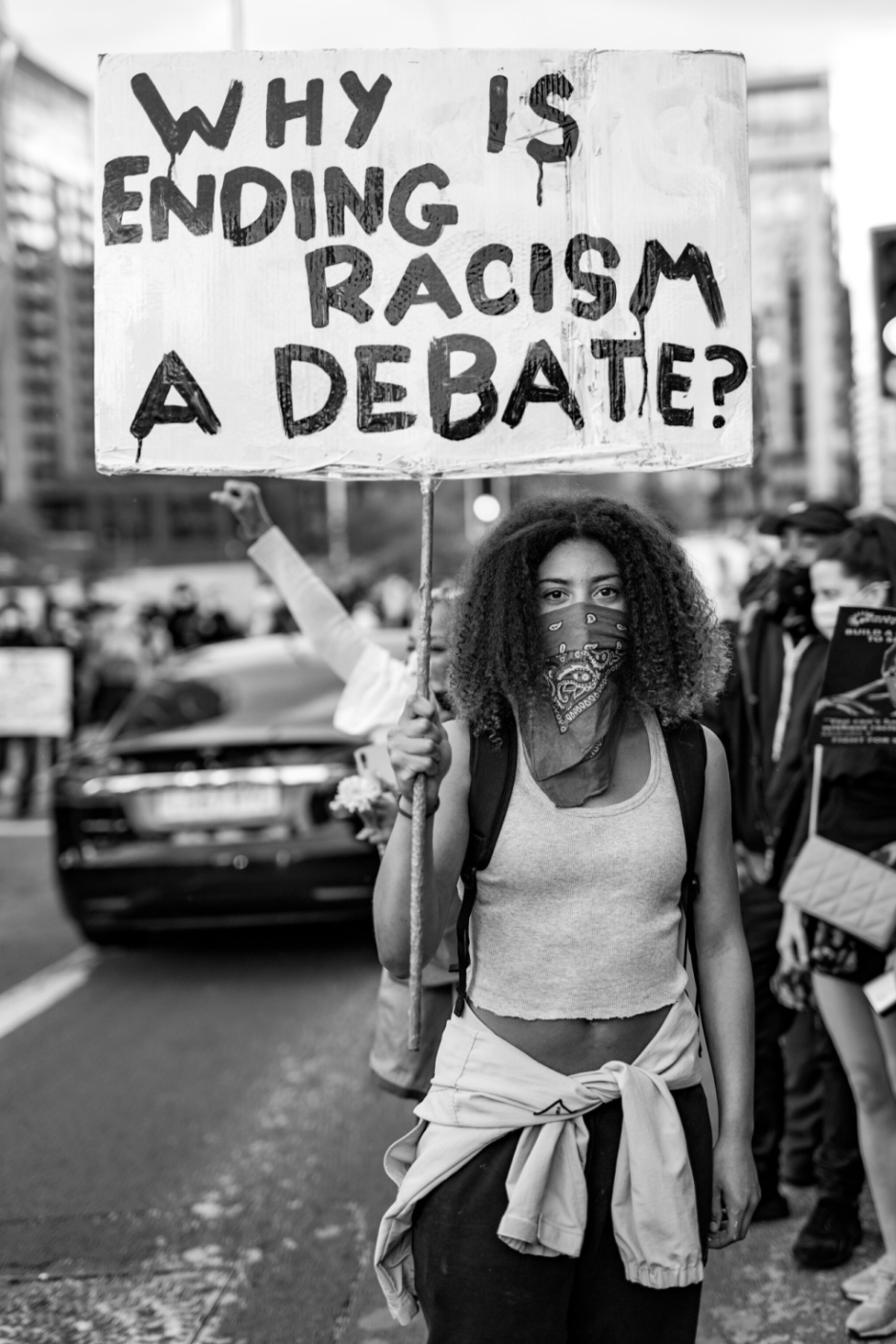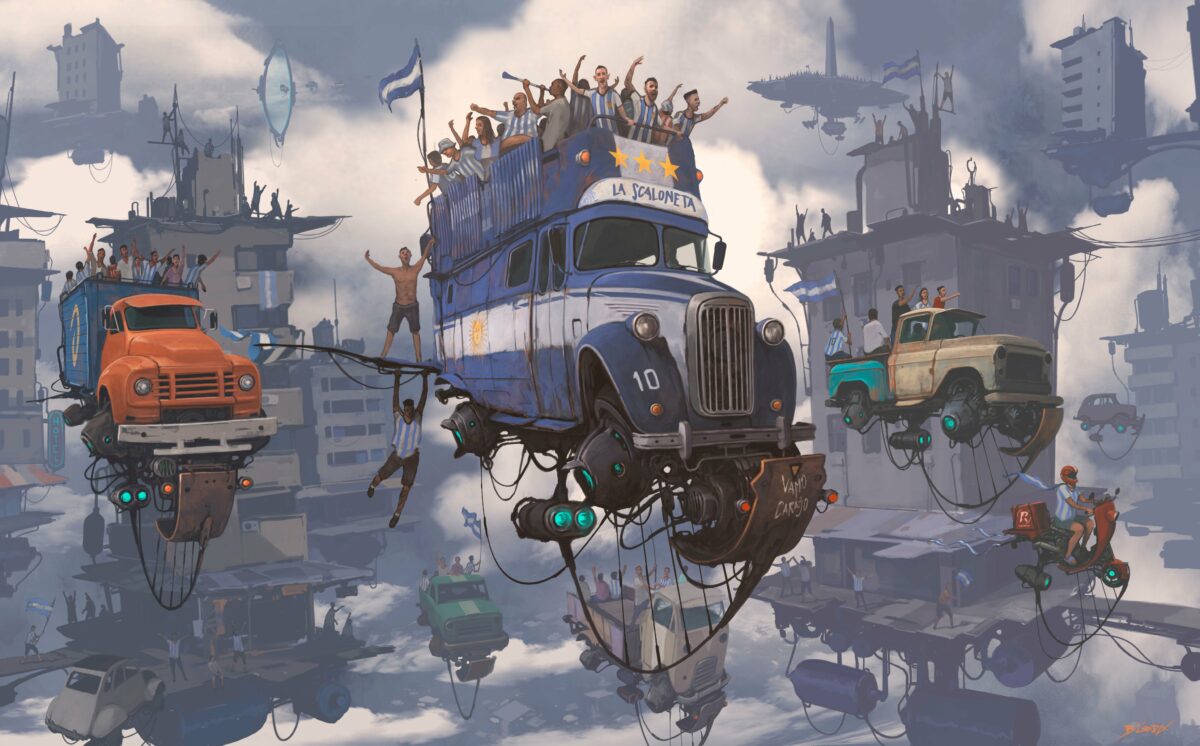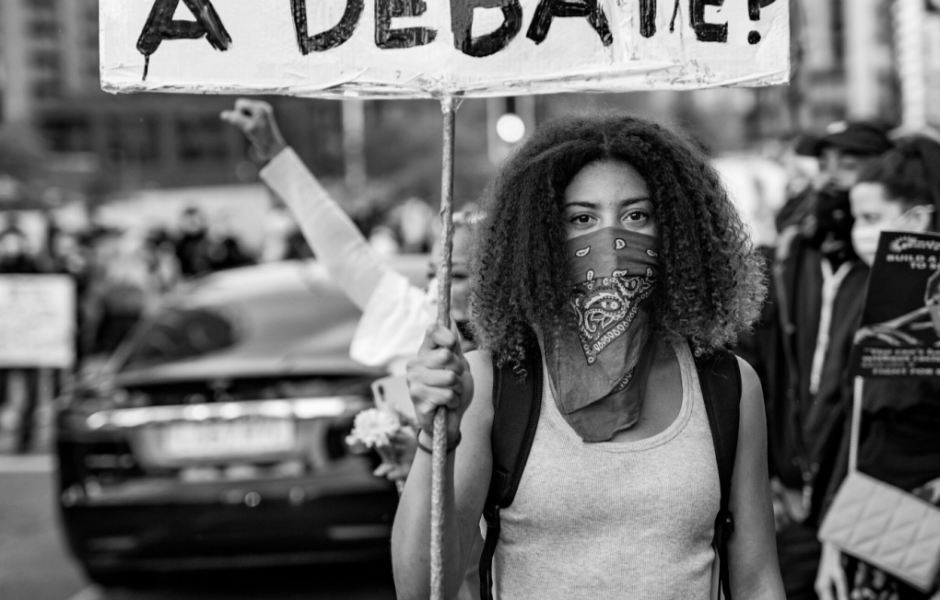Misan Harriman Shares His Vision for a More Equitable Web3
Five years ago, Misan Harriman picked up a camera for the first time. Three years ago, he became the first Black man to shoot a cover for British Vogue in the magazine’s 104-year history. Today, he’s on a mission to use Web3 to level the playing field for artists around the world.
As someone who’s struggled with dyslexia and was afraid to pick up his camera for years, Harriman’s journey is as much about personal and artistic growth as it is about the democratizing potential of blockchain technology.
Finding his artistic voice
Shortly after he picked up his camera for the first time, and several years before he would officially enter Web3, Harriman’s life would take a drastic turn. He photographed protestors during the summer of 2020 at the George Floyd demonstrations in London. Martin Luther King III shared Harriman’s photo on Twitter.
Things developed quickly from there, and Harriman became one of the most widely-shared photographers of the Black Lives Matter movement. His work caught the attention of British Vogue editor Edward Enninful. Enninful commissioned Harriman to shoot the magazine’s coveted September issue, marking the first time a Black man had ever done so.
Harriman recounted his journey into photography in an interview with nft now. The Nigerian native had a desire to get into photography, but self-doubt and imposter syndrome kept him from picking up his camera. Harriman also has dyslexia and has struggled with shame about his disability, and indeed admits to being ashamed of his own mind.

It wasn’t until his wife embraced the aspects of his mind he had once been ashamed of and the internet provided him with a platform to express himself, that he finally gained the confidence to turn to photography and share his unique perspective with the world.
This transformative experience set the stage for the fateful day in London when he ventured into the streets to photograph the George Floyd protests, aiming to be, as he puts it, “a custodian of truth.”
His perspective on the role of art in society is clear: art is for community, introspection, and truth-seeking. Humanity should decide art’s value, not a select few gatekeepers. And that’s where he sees the opportunities with blockchain technology: at the intersection between technology, art, and equity.
Blockchain’s potential for equity
Harriman believes that blockchain technology has the potential to democratize the art world. He explains, “blockchain is the first piece of technology that has irrevocable provenance to confirm ownership of items without government or institutions run by a small group of people to confirm if it exists or not.” He sees it as a means to take power away from traditional gatekeepers and enable communities to support artists from anywhere in the world.
The decentralized nature of blockchain allows artists to connect with audiences and showcase their work, even if they are in remote areas of the world that sit far from the luxurious galleries where so many creators have exhibited and, in so doing, made names for themselves.
Harriman, now one of the top photographers in the world, says that these technologies ultimately open doors for talented individuals who would otherwise have few (if any) options. “There are people with as much, if not more, talent than me who will never have access to [galleries and curators in] New York, London, Paris, or LA. Should they abandon their passion? The answer would be yes, if not for blockchain technology,” he said.
Yet, Harriman emphasizes that the real benefit of the technology rests in its ability to remove power from the hands of a select few.
With blockchain technology, communities can unite and decide if they want to support artists from the Middle East, South America, Sub-Saharan Africa, or other underrepresented regions. In this respect, Harriman notes that “smart contract technology allows the perception of art’s value to be crowdsourced” and taken out of the hands of small groups of power.
More than just lip service
In 2022, Harriman joined the Tezos Foundation as a curator and manager for its £1 million permanent art collection. His motivation stemmed from the lack of intentional support for underrepresented groups — including Black and Brown people, women, and people with physical disabilities — in the blockchain space.
As a collector, Harriman takes pride in using his personal collection to support artists worldwide with diverse stories and backgrounds.
Recently, he’s been interested in the talent coming out of Argentina, including Dr. Alejandro Burdisio, who Harriman likes because of Burdisio’s film concept style and his age making him significantly older than other artists in Web3. Harriman has also supported Argentinian painter Anibal Argañaraz, whose work Harriman calls staggering.

Harriman also supports a Nigerian iPhone photographer who goes by Blessing Atas, who Harriman calls “a true poet of light with any instrument.”
However, despite his efforts to support artists from around the world, Harriman still hasn’t seen blockchain technology used to its full potential in promoting equality. Indeed, Blessing Atas, for one, is exactly the type of artist who may not feel confident enough to go into a Twitter Space with a dozen VC-backed men from California screaming about what Degen play they’re making.
“Why shouldn’t she have a voice?” Harriman asks. “Why shouldn’t her talent be supported?”
But there’s a problem
The current Web3 landscape is dominated by developers from North America and Europe, limiting the potential for global talent to emerge. Harriman notes, “Most of the highest paying jobs in Web3 go to developers.” He sees no reason why the lion’s share of devs should come from commonly represented regions.
Coding is a language; anyone can learn it. Why can’t there be a broader array of men and women from Latin America, Africa, and other traditionally underrepresented regions in Web3, he asks. Opportunities outside of Silicon Valley, New York, London, and other western seats of culture remain limited.
But Harriman believes improved access to liquidity could be the catalyst for meaningful global change. This would allow talented artists and developers alike in economically impoverished nations to stop worrying about survival and start building instead. As Harriman points out, “It’s really hard to be a founder when you’re worried about your next meal.”
The existing builders have created impressive platforms, but Harriman envisions the potential of replicating that talent worldwide. He argues that part of the problem is the disconnected nature of well-intentioned efforts. Solutions need to be built from the ground up by those directly affected in the regions concerned. For example, people in Turkey could establish a DAO to direct relief funds in response to a natural disaster like the February earthquake that hit the region. Blockchain technology enables scalable solutions like this.
“We can still build degen communities, but that doesn’t mean we should lack empathy or understanding of what’s happening in the real world.”
Misan Harriman
To further his vision for a more equitable Web3, Harriman serves as an advisor to multiple projects, guiding them away from performative allyship and towards more meaningful support for underrepresented groups. He identifies opportunities for marketplaces to create funds designated for promoting art from diverse voices and for publications to feature more LGBTQ+ artists beyond token gestures like rainbow logos during Pride month.
“We can still build degen communities,” Harriman says, “but that doesn’t mean we should lack empathy or understanding of what’s happening in the real world.”
He’s determined to foster these conversations, which is why he founded Culture3, a publication dedicated to showcase artists, builders, and communities augmented by and built on blockchain.
Envisioning a more inclusive future
Harriman’s vision for the future of Web3 extends beyond artistic representation. He sees commercial value in connecting talented individuals from the Global South to blockchain technology.
As middle classes grow rapidly in places like India and Sub-Saharan Africa, Harriman believes that companies should focus on building marketplaces and exchanges tailored to these regions that have been traditionally ignored by VCs, builders, and developers.
Harriman points to Nigeria as an example. The country has a population of over 200 million, with around 70 percent of those people under 30 years old. By connecting those young people — artists and otherwise — to blockchain technology, Harriman believes countless opportunities could be unlocked.
Yet, at the moment, Harriman says he doesn’t believe any major crypto exchanges actually work in his country of birth. He also sees potential in one-of-one art collections, where creators make art for the love of it, and collectors support them for their passion rather than for profit. He believes this approach can help onboard more people into the space and create a more inclusive environment.
In his own work, Harriman continues to create art that resonates with people while illuminating truth and injustices. As an ambassador for Save the Children, he documented the worst famine in decades in Somaliland, bearing witness to the suffering of innocent children born into a hellscape they never chose.
Ultimately, Harriman hopes that blockchain technology will be used more intentionally to help those who have been unseen and underrepresented.
“This is not about handouts,” Harriman asserts. “This is about a commercial opportunity to service a global family through smart contract technology.”
The post Misan Harriman Shares His Vision for a More Equitable Web3 appeared first on nft now.

